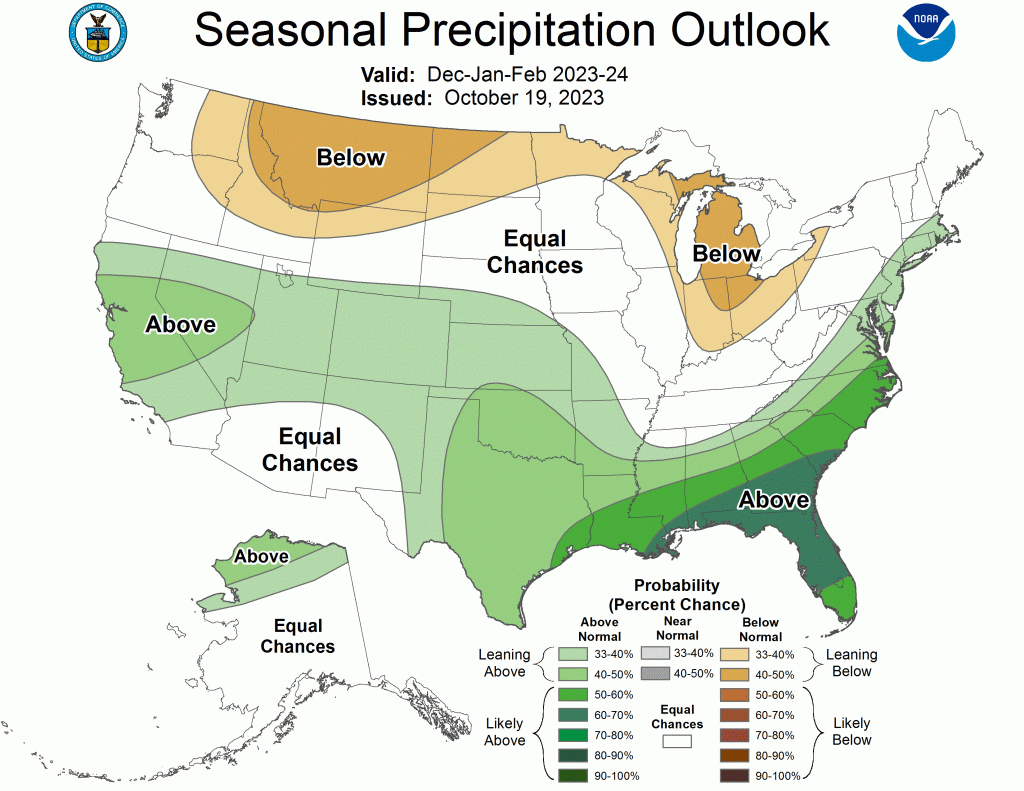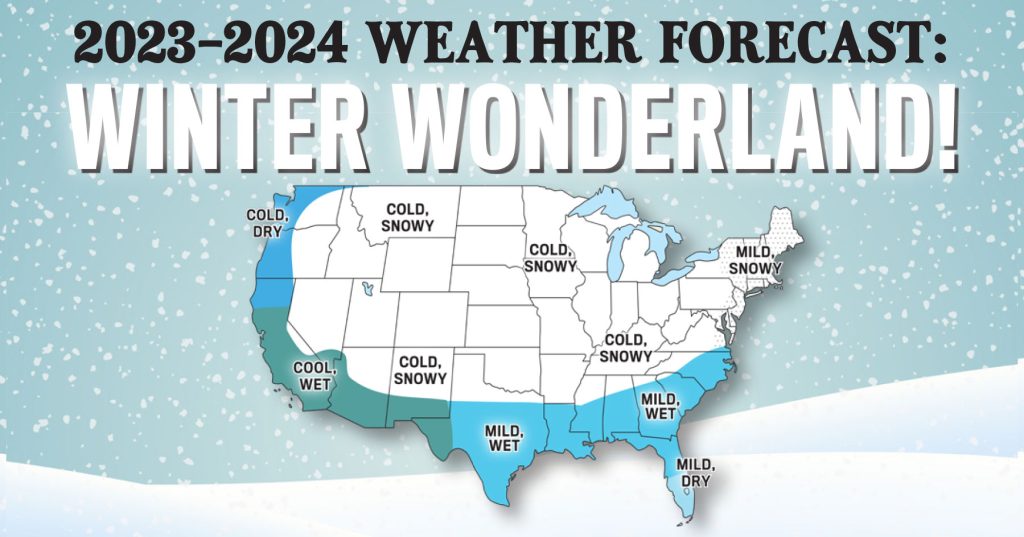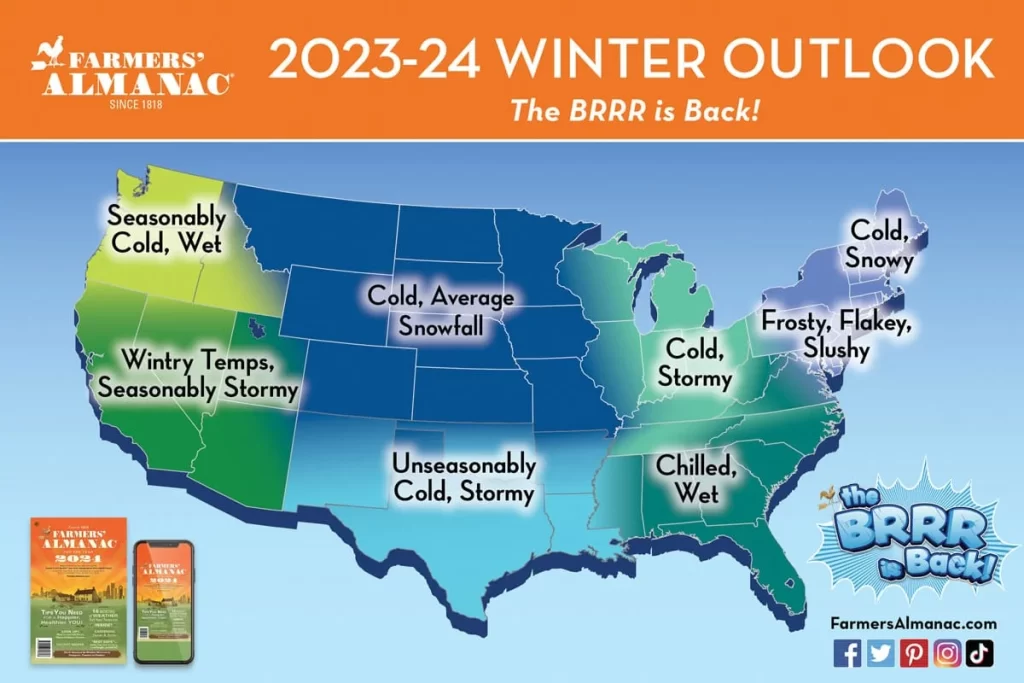Looking back at 2023, I would have to say that it provided more good weather news than bad.
It was a year that would begin with abundant snowfall and very cold temperatures throughout the winter months, followed by a cool and very wet summer, only to end that trend with two months of warmer and drier weather. That was 2023 in a nutshell.
I’ll summarize all the ups and downs, highs and lows, and highlights of the weather experienced here in Jackson Hole this past year. I will also look at how 2023’s weather compared to recent years and to the long-term averages, from the data at the Jackson Climate Station.
The End
Let’s begin with the bad news first, how the year ended on such a dry note. November 2023 had less than a half an inch of precipitation in town and just over 4 inches of snowfall, all of that coming in the Thanksgiving storm. Jackson’s average precipitation in November is 1.30 inches and average snowfall in November is 9 inches. In contrast, in November of 2022 Jackson had 3.20 inches of precipitation and 21 inches of snowfall.
December averages 1.52 inches of precipitation and 17 inches of snow in the Town of Jackson. December 2023 only had 0.70 inches of water and 5.8 inches of snowfall. The year ended with only one inch of settled snow on the ground on December 31st, 2023. Last year, December of 2022 had 2.32 inches of precipitation and 22 inches of snowfall. On the last day of December 2022, there was 14 inches of settled snow on the ground in Jackson.
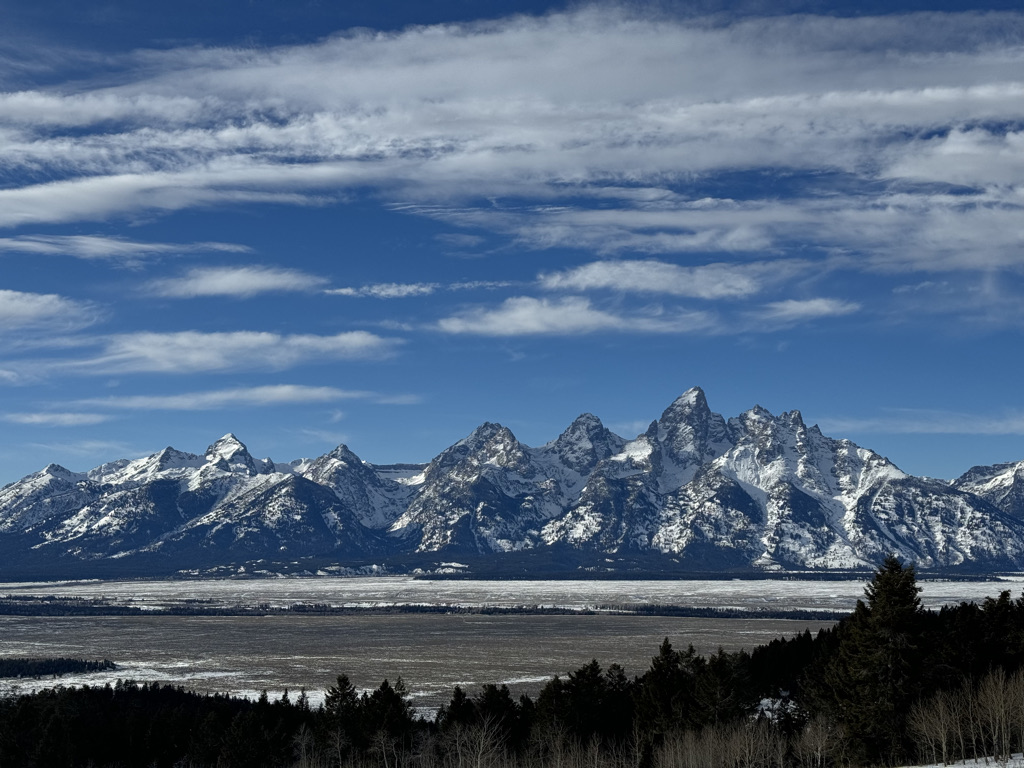
This was not the driest, nor the least snowy December on record here, although, I had to dig pretty deep to find Decembers that were grimmer than this one. There were maybe a dozen other Decembers in the records that had less snowfall than this December, but most had more than an inch of settled snow on the ground at year’s end.
One of the grimmest Decembers was 1976, which only recorded 4.5 inches of snowfall for the month and reported no snow on the ground in town on December 31st. December of 1962 was worse, with no snowfall all month and no snow on the ground at year’s end. December of 1917 had only 4.9 inches of snowfall and also reported no snow on the ground in town on December 31st.
The Beginning
Going back to the start of 2023, the year began with bountiful snow and it was also very cold. January, February, March, and April all had above average snowfall. We also achieved record snow depths in town during the first week of April 2023, with over 2 feet of settled snow on the ground at the Jackson Climate Station. That is deeper than has ever been officially recorded here at that time of year.
It was also a cold start to 2023, with well below average temperatures each month from January through April. There were also 53 days between January 1st and April 1st, 2023, with morning low temperatures of zero degrees or colder. The average number of days with temperatures of zero degrees or below in a whole year is 41 days. The coldest day of the year in 2023 was on January 31st, when it dropped to 33 below zero on the town thermometer.
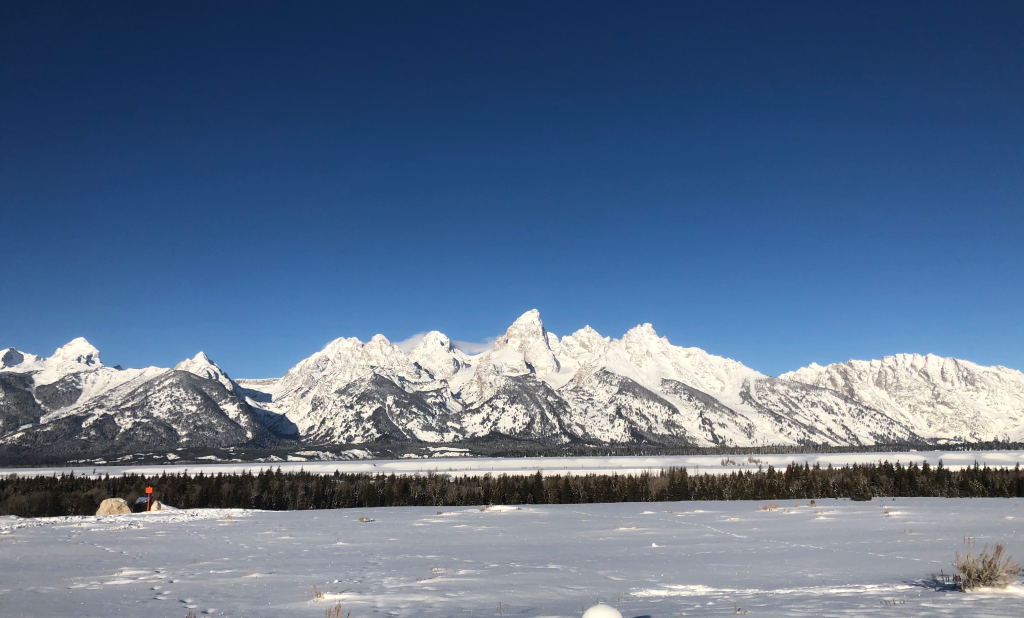
That was all preceded by a colder than normal December and November in 2022. November 2022 was the coldest November ever recorded in the Town of Jackson. All that made for one of the longer, colder, and snowier winters that Jackson has ever experienced.
I should also mention that the Jackson Hole Mountain Resort had their snowiest winter on record in 2022-23, with 595 inches of snowfall, surpassing the old record of 585 inches from the Winter of 1996-97.
Last winter was literally like having two winters in one, perhaps compensating for this winter’s slow start.
The Middle
Fortunately, spring sprang quickly, temperatures warmed, but Jackson remained wetter than normal in April, May and June. Snow started melting and began filling our depleted reservoirs, taking them from around 25-percent capacity to near 100-percent full.
May 2023 was a about one degree warmer than the long-term average for the mean temperature in May, (mean temperature is the average of the monthly high and low temperatures). That was the first month since September of 2022 that had an above average monthly mean temperature in town.
Below average monthly temperatures returned for June, July, and August of 2023, all three months recorded below normal mean temperatures. The hottest day of the year was on July 24th, with a high temperature of 89 degrees.
July was drier than normal this summer, but June and August more than made up for that deficit. The Summer of 2023 ended up with a total of 6.19 inches of rainfall in town, compared to the long-term average total rainfall in June-July-August of 3.77 inches.
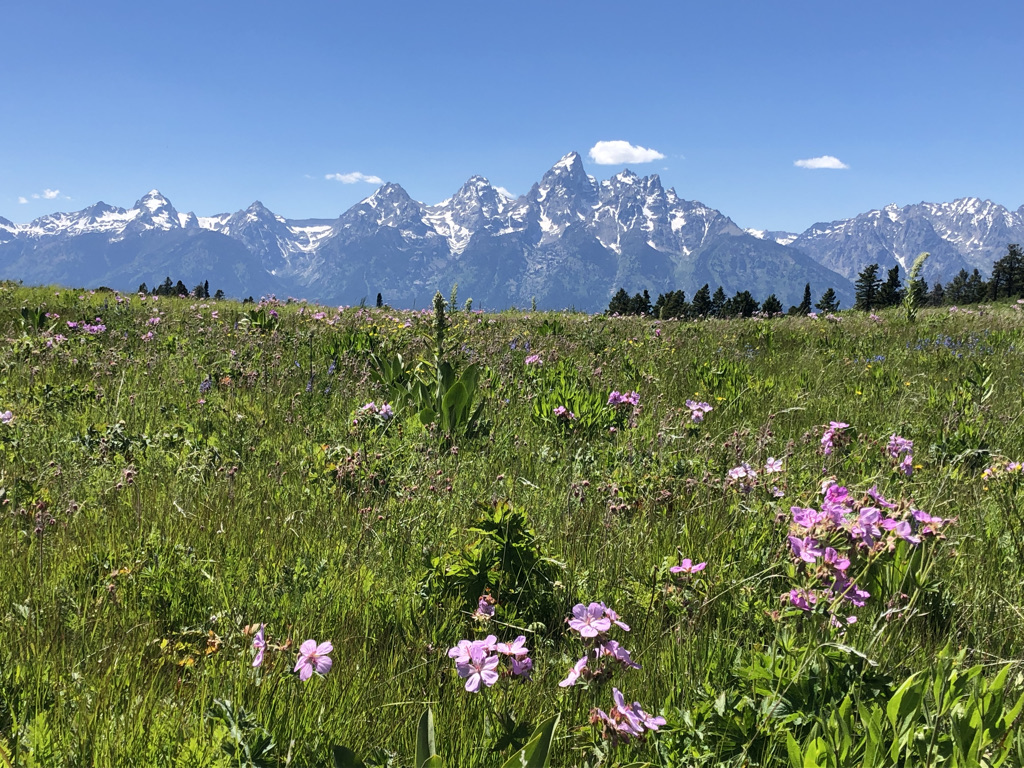
That all added up to a cool, wet, and very green summer in 2023. Perhaps one of the greenest summers I have seen in my 40-plus years living in Jackson.
Our run of cooler and wetter than normal weather extended into September and October of 2023. Then, as described above, that trend abruptly ended in November and December of 2023.
In Summary
The Jackson Climate Station has historic records dating back to 1905. There are missing months and years interspersed in that record, only the months and years with complete weather recordings are used to establish the historic or long-term averages. The table included below compares recent years to those historic averages.
The year 2023 ended up cooler than average, overall, by almost two degrees. It was wetter than average by almost five inches, and it fell one inch short of the average for annual snowfall in town.
Keep in mind, it is the extremes of weather that make our averages. From month to month, year to year, or decade to decade, the weather is constantly changing. There will be highs and lows, warm periods and cold periods, dry spells, wet spells, snowier months or seasons, as well as less snowy periods. It’s fascinating to me how variable our weather can be, and this year was no different in that respect.
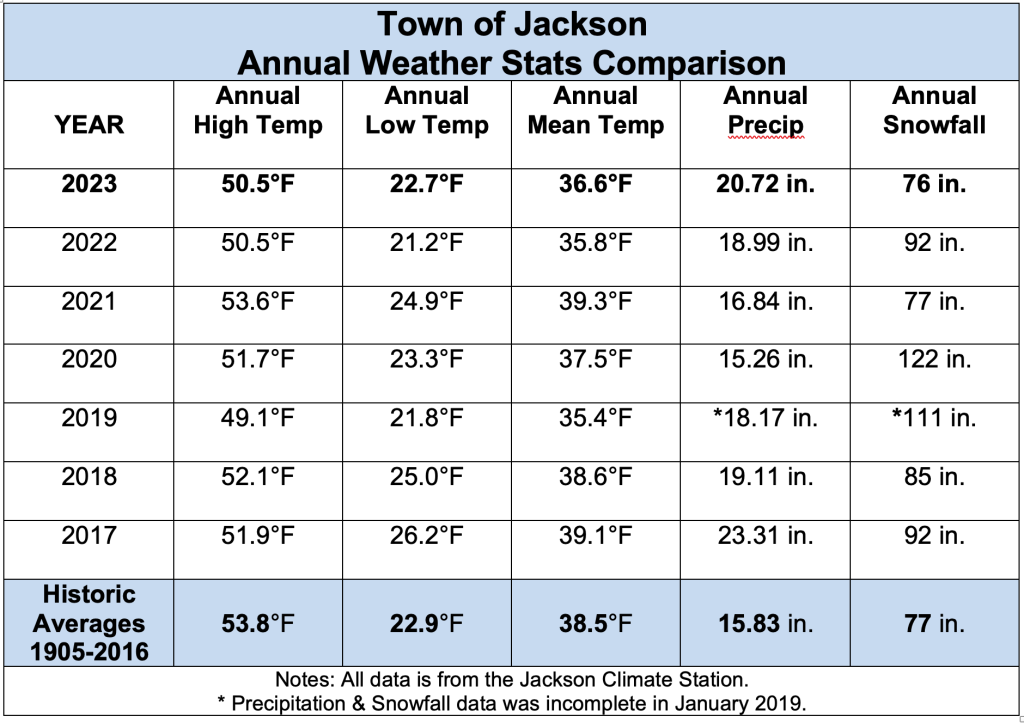
Post by meteorologist Jim Woodmencey









